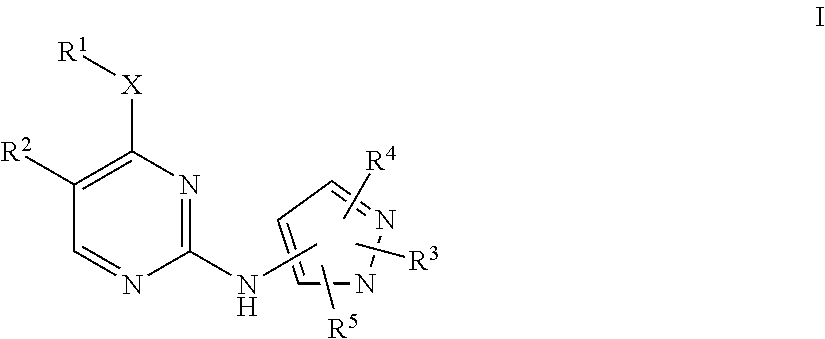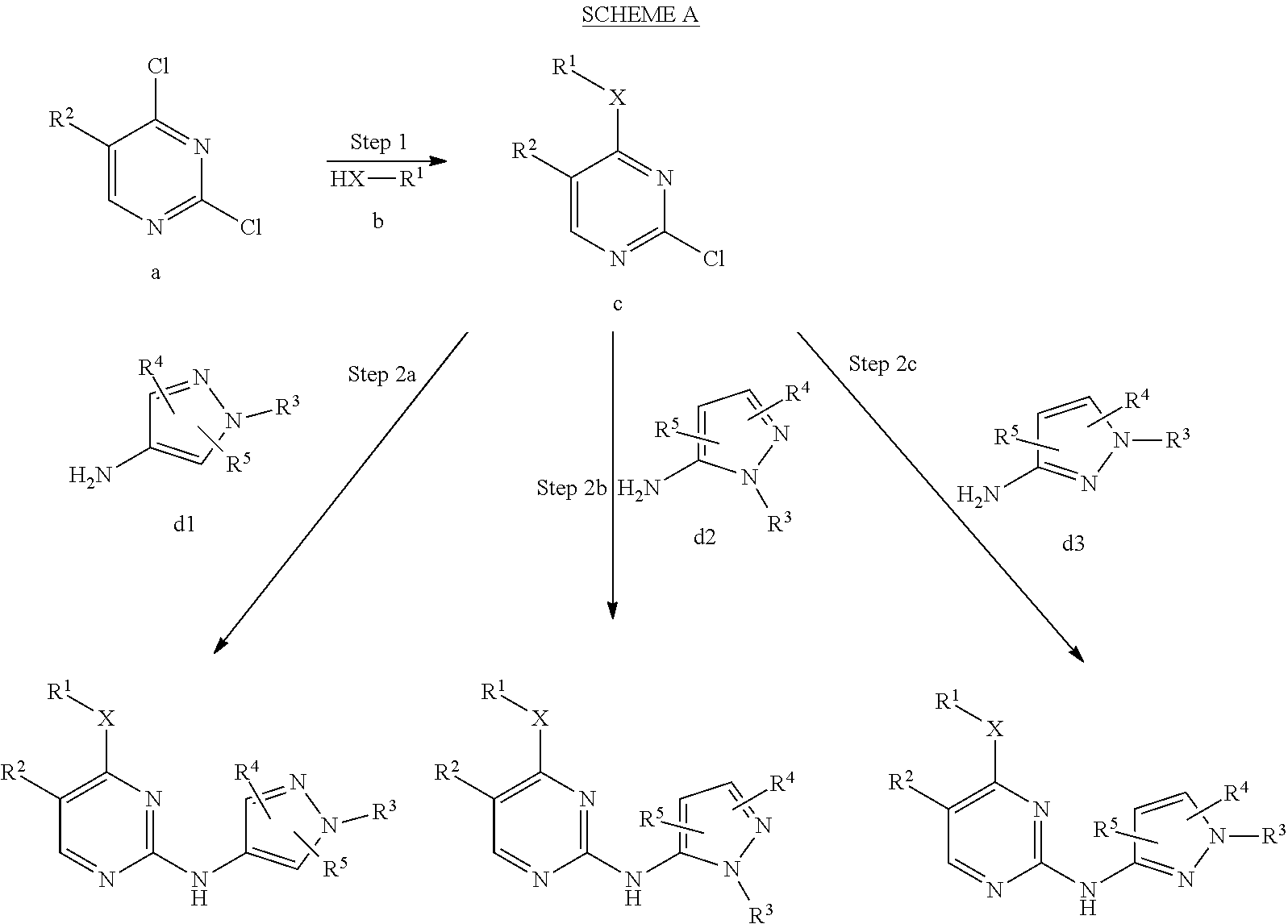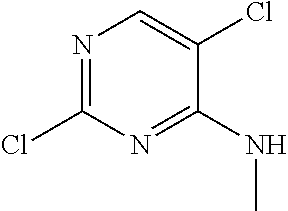Pyrazole aminopyrimidine derivatives as lrrk2 modulators
a technology of aminopyrimidine and pyrazole, which is applied in the direction of biocide, organic chemistry, drug compositions, etc., can solve the problems of trembling, slow movement, and impaired ability to direct and control the movement of the body
- Summary
- Abstract
- Description
- Claims
- Application Information
AI Technical Summary
Benefits of technology
Problems solved by technology
Method used
Image
Examples
examples
[0299]The following preparations and examples are given to enable those skilled in the art to more clearly understand and to practice the present invention. They should not be considered as limiting the scope of the invention, but merely as being illustrative and representative thereof.
[0300]Unless otherwise stated, all temperatures including melting points (i.e., MP) are in degrees celsius (° C.). It should be appreciated that the reaction which produces the indicated and / or the desired product may not necessarily result directly from the combination of two reagents which were initially added, i.e., there may be one or more intermediates which are produced in the mixture which ultimately leads to the formation of the indicated and / or the desired product. The following abbreviations may be used in the Preparations and Examples.
ABBREVIATIONS
[0301]AcOH Acetic acid[0302]AIBN 2,2′-Azobis(2-methylpropionitrile)[0303]Atm. Atmosphere[0304](BOC)2O di-tert-Butyl dicarbonate[0305]dba tris(dib...
example 8
5-Bromo-N2-(1,5-dimethyl-1H-pyrazol-4-yl)-N4-methylpyrimidine-2,4-diamine
[0413]
[0414]To a mixture of 5-bromo-2-chloro-N-methylpyrimidin-4-amine (0.201 g, 0.903 mmol) and 1,5-dimethyl-1H-pyrazol-4-amine (0.12 g, 1.08 mmol) in 2-methoxyethanol (2 mL) was added TFA (0.070 mL, 0.9 mmol). The reaction was stirred in a sealed tube at 100° C. for 90 minutes. The resulting precipitate was collected by filtration. The isolated solid was further purified by reverse phase HPLC to give 5-bromo-N2-(1,5-dimethyl-1H-pyrazol-4-yl)-N4-methylpyrimidine-2,4-diamine (46 mg, 17%). LCMS (Method A): [MH+]=297.0 at 2.57 min.
[0415]1H-NMR (DMSO): δ 8.28 (s, 1H), 7.84 (s, 1H), 7.49 (s, 1H), 6.79 (d, J=3.4, 1H), 3.67 (s, 3H), 2.82 (d, J=3.6, 3H), 2.14 (s, 3H). Ki=0.017 μM.
[0416]Compounds made using the above procedure are shown in Table 3 below, together with low resolution mass spectrometry (M+H), proton NMR, and LRRK2 Ki (micromolar) data for selected compounds determined from the assay described below.
TABLE...
example 43
3-methyl-3-(3-methyl-4-(4-(methylamino)-5-(trifluoromethyl)pyrimidin-2-ylamino)-1H-pyrazol-1-yl)butanenitrile
[0417]
Step 1-methyl 3-methyl-3-(3-methyl-4-nitro-1H-pyrazol-1-yl)butanoate
[0418]A solution of 3-methyl-4-nitro-1H-pyrazole (1.00 g, 7.87 mmol), methyl 3-methylbut-2-enoate (2.20 g, 18.9 mmol), and DBU (3.10 g, 20.5 mmol) in DMF (5.0 mL) was stirred overnight. The mixture was purified by reverse phase Combiflash to afford the title compound (130 mg, 7%) as yellow oil. LC-MS (ESI): m / z=242 (M+H)+.
Step 2-3-methyl-3-(3-methyl-4-nitro-1H-pyrazol-1-yl)butanoic acid
[0419]To a solution of methyl 3-methyl-3-(3-methyl-4-nitro-1H-pyrazol-1-yl)butanoate (508 mg, 2.10 mmol) in EtOH (10 mL) and H2O (10 mL) was added LiOH (265 mg, 6.30 mmol). The reaction mixture was stirred for 12 h. The mixture was acidified to pH around 5. The resulting mixture was extracted with EtOAc, washed with brine, and dried over Na2SO4. Removal of the solvents afforded the title compound (450 mg, 94%). LC-MS (ESI...
PUM
| Property | Measurement | Unit |
|---|---|---|
| temperature | aaaaa | aaaaa |
| temperature | aaaaa | aaaaa |
| temperature | aaaaa | aaaaa |
Abstract
Description
Claims
Application Information
 Login to View More
Login to View More - R&D
- Intellectual Property
- Life Sciences
- Materials
- Tech Scout
- Unparalleled Data Quality
- Higher Quality Content
- 60% Fewer Hallucinations
Browse by: Latest US Patents, China's latest patents, Technical Efficacy Thesaurus, Application Domain, Technology Topic, Popular Technical Reports.
© 2025 PatSnap. All rights reserved.Legal|Privacy policy|Modern Slavery Act Transparency Statement|Sitemap|About US| Contact US: help@patsnap.com



